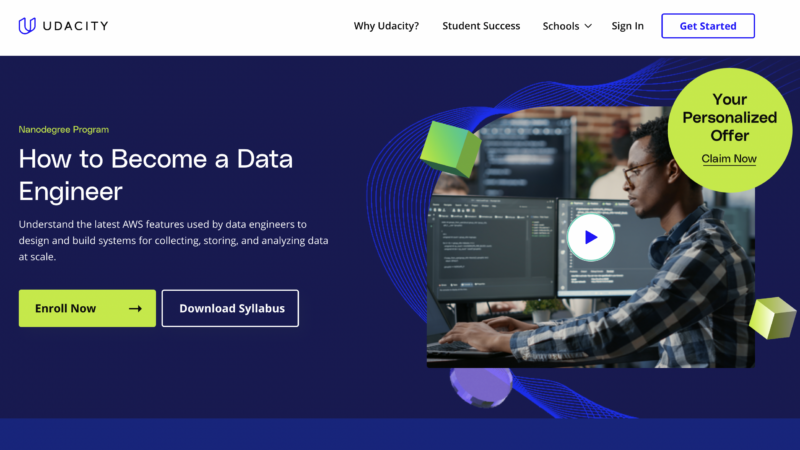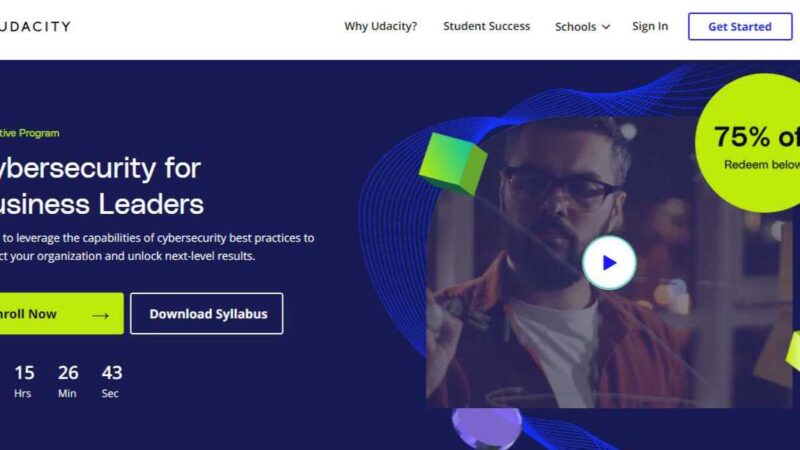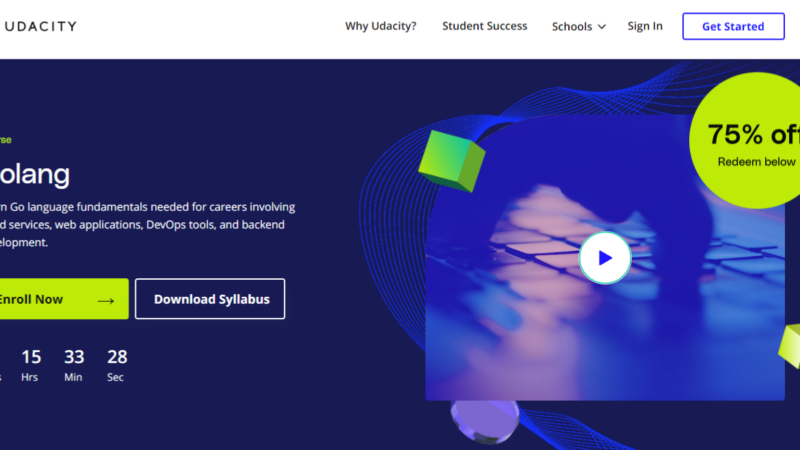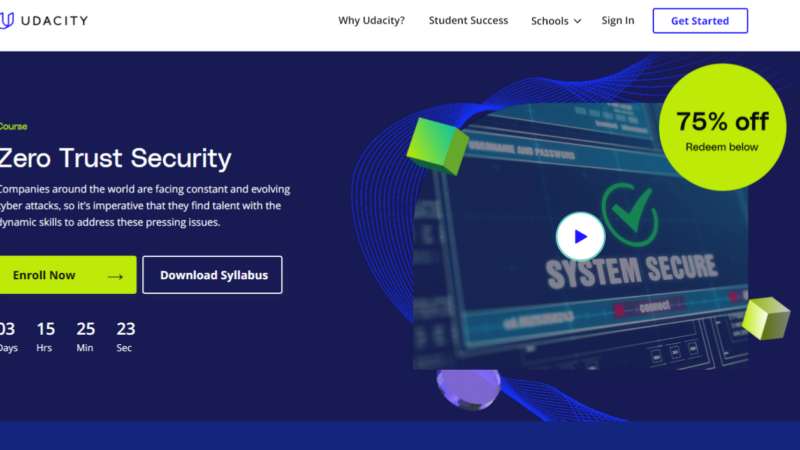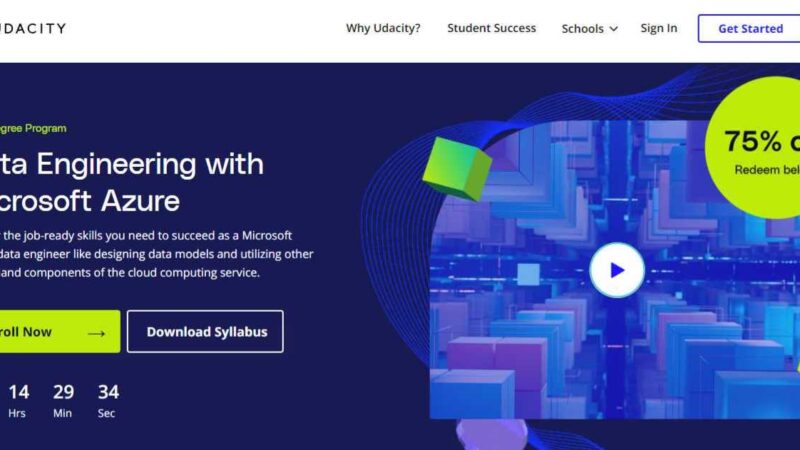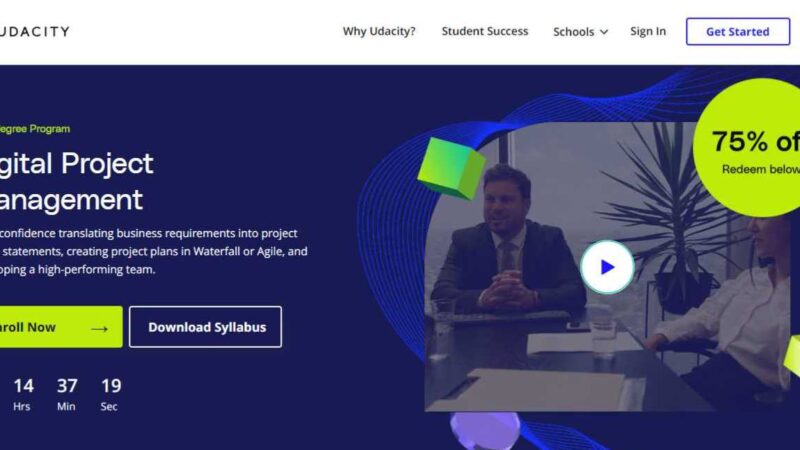Udacity Programming for Data Science Nanodegree with Python Review

Fluency with the powerful language of Python comes with huge opportunities. You’ll become part of an in-demand bunch with abilities that companies all over the industry are on the hunt for. Combine that understanding with the ability to work with and analyze data and you’ve got an explosive set of skills that can get you in the door just about anywhere.
If you’re looking into breaking ground and starting off with a career that is in its early stages, the first thing you’ll need to do is grow your knowledge base. Udacity has recently added their Data Science Nanodegree with Python to their long list of in-depth courses. To check out the specifics of this course to decide if it’s right for you, we’ve done a little digging to bring you this review. We have outlined the course plus, added in some insights into the future of the job market, all of which can help you make the best decision for you.
Who is Udacity?
Udacity is an online academy that happens to have started from two professors at Stanford university. They’ve been running on the web since 2012, where they set out to bring the knowledge of technological based courses to all. During their time online, they have made powerful connections, teaming up with companies to create content that closely mirrors a day in the life of a professional. While the academy has been applauded for much of their content, they seem to have more recognition for their nanodegrees, which go further into the depths of concepts and come wrapped with extras.
Nanodegree Extras
Besides partaking in a certification program that promises to take no more than a few months, nanodegrees come with a few extras, perhaps the very thing that sets Udacity apart from other online academies. These extras include:
Freedom
You’ll have the freedom to log in whenever you want. Plus, you can take as much time as you need to complete the course. You’ll never have set times or set schedules with this program, tailoring it how you see it to best fit your own schedule.
A community
Along with enrollment comes access to the student forum. Meet other learners like you from the same class and/or same field. Use this to your advantage to seek help if you need it or, start making connections before ever stepping foot in the field.
A mentor
In case you run into any troubles, which is sometimes typical with technology, you can reach out and get guidance from your mentor. They are there for you when you need them, helping you to keep learning without any interruptions due to pesky technological problems.
Industry projects
It is Udacity’s goal to send graduates into the field with industry experience. For this reason, you’ll find several projects sewn into each nanodegree, all of which attempt to stay as close to the real deal as possible.
Career prep
A team of expert career staff will help get graduates good and ready to break into the field. This includes cleaning up of resumes and social networking pages like LinkedIn. Once your resume is good to go, it will be shared with a large community of recruiters in search of new members for their team. You can also schedule a mock interview, using it to get you ready for your big day.
Meet the Team
Included in each nanodegree are carefully selected individuals with the goal of passing on their knowledge to new and anxious learners. For this course, the team includes:
Josh Bernhard
Josh has been teaching anxious learners interested in data for almost 10 years. He’s taught with universities both on-sight and online, and is now lead instructor with Galvanize. Before deciding to share his knowledge, he worked with teams all over the field, for cancer research and process automation to name a few.
Derek Steer
Derek has worked with some amazing companies throughout his time in the field, including Facebook. He’s helped big names in the business create an analytical foundation, using his experience to land him a position as CEO of Mode Analytics. You will now find him in both roles, sharing his expertise with learners via lectures and his recently authored book SQL School.
Juno Lee
In her earlier career, she spent most of her time building recommendation engines and NLP models that would readily be adopted by some top names in the business. She began bringing her passion to other learners, beginning as an instructor and now working to build entire courses at Udacity.
Richard Kalehoff
Before becoming a course developer, Richard took his knowledge to nonprofits, where he was able to get hands on experience with a wide range of topics all the way from front end, to back end and everything in between.
Karl Krueger
Before hopping on over to Udacity, he worked with Google to construct automation and monitoring systems that would help them stay online. Now, he dedicates most of his knowledge to creation of courses for the academy.
Before you Start
Though the title may seem intimidating, the academy promises that you’ll be able to do this course without any prior knowledge. They do recommend the most basic computer skills, like copy and pasting and file, folder opening. This introductory level course is meant to take you from the very beginnings in deeper with more complex concepts.
If you’re feeling like a brush up or extra learning would serve you well, the academy offers a long list of free courses that could be of help. You can take a look at some of the things you’ll be working with, and you can find majority of them here: https://blog.udacity.com/category/free-courses
Course Breakdown
This introductory course is broken down into three sections, each of which comes further chopped up to make it easier to swallow. You will take what you learned in each section and use it in a final hands-on topic that will provide you with insight into the actual powers of the language. The sections and their contents are:
Meet SQL
A full foundation of SQL will be introduced to you in this section. You’ll learn about JOINs and Aggregations while getting a look at how these concepts can be used for more complex issues. Toward the end, you’ll take this knowledge and use it to investigate a database, to start your hands-on experience.
Now Introducing… Programming with Python
Up next is a look into Python, learning the very basics. You’ll be exposed to things like data structures and variables building up a solid base. NumPy and Pandas are introduced in this section, two of Pythons useful libraries. You will take these concepts along with you to check out a set of bikeshare data, applying some of the skills you’ve just mastered.
Intro to Version Control
This section will teach you the ins of sharing creations with others in the field. At the end, you’ll actually post your work on GitHub, seeing how you can promote yourself and make connections based off the work you do.
How Long Will It Take?
Part of the Udacity perk of flexibility is the freedom to take as long as you’d like. Once you have access to the course, you can login as often as you’d like, and at anytime we might add. This sounds like a sweet deal, right? But you might want to take it easy on the free time and finish this course in a good amount of time; more on that in a second.
As a solid estimate of the time it will take you to complete the course, Udacity claims that, at 10 hours per week, you could be good and finished with the course in three months. This is just an estimate and is used to help in calculating the cost of the course.
What’s the Cost?
The time that it takes to complete the course has a direct effect on the cost. This is where the Udacity estimate comes into play, which we will explain. Learners have two potential ways to pay, each one coming with their own set of pros and cons.
Pay per month
The first option is to pay as you go, where you’re charged per month and given access to the course plus perks. This could be a great option, especially if you’re able to dedicate more than the estimated time and finish the course faster. If not, then it could be better to go with the bundle deal.
Bundle up and save
This is where the estimate comes into play, where the academy bundles the estimated months together, discounts the price, and asks for it all up front.
As of now, the academy is running a deal where sign up comes with a month for free. This means good news for both ways to pay, as each one comes with a steep discount. The price per month is $359, which will be charged after your first month of access is complete. The bundle deal includes a 15% discount so, you’ll get 3 months of access for the price of two dropping the monthly rate to $206.
Learners Perspective
Learners that are currently enrolled and successful graduates alike have given this course an overall positive rating. The academy as a whole has a pretty good online standing, with a lot of buzz among popular review and tech related forums. Out of a total of 5 stars, the course has received a 4.7, and here is what a few reviewers had to say:
“I really like it and think things are very well explained. The exercises on each chapter make you identify clearly the things you got clearly and the ones you didn’t, making you revise and understand everything. The classes are not long, so they don’t get boring, and the text highlighting the most important points under the videos are really helpful. The only point against the course is that it takes a lot longer, sometimes double or even more, to complete the assignments…” – Isabel C.
“It has been very useful and informative – I thoroughly enjoyed the approach taken by the teachers to teach us without simply showing us how to do it. The questions were related to knowledge offered in the videos/texts, but significantly more challenging so as to really make sure the lessons were understood. Further, I like how many questions each new topic offered…” – Zayd H.M
The Job Market
As you may well know, IT is a stable market, and a promising one at that, as the world continues to go digital. This, however, doesn’t mean that all IT jobs are created equal, and some are more in demand and much more stable than others. As far as skills with Python go, you should be sailing on smooth waters. Sitepoint.com recently released an analysis of all the possibilities that come with Python, listing Data Science as a promising branch. They reported that the overall investment reached above $1 trillion in the year 2018 and is only expected to continue to crawl up from there.
PWC created an in-depth look at what the future holds, predicting 2020 to show over 2.7 million job postings for those with analytical skills specializing in data science. They do shine light on one dark side of this career, pointing out the vast competition for those with only entry-level skills. Combining data science techniques with the power of Python has an overall more promising future, especially as you begin to develop more advanced skills. The more skilled you are, the higher the salaries, which are known to creep up to $150,000 and beyond.
Final Thoughts
Data science happens to be a market that is in its very early stages. Getting in now would mean that you’re coming in before the peak plus, have a basis of Python. The market is filling but, those with knowledge of the powers of Python are in high demand. Jumping in now and beginning to grow your experience with Python in the field could mean amazing things in the very near future, as more and more companies rely on data to paint detailed and informative pictures.
An introductory certification program can be just the thing to launch you in the right direction, and Udacity is a pretty solid choice.
